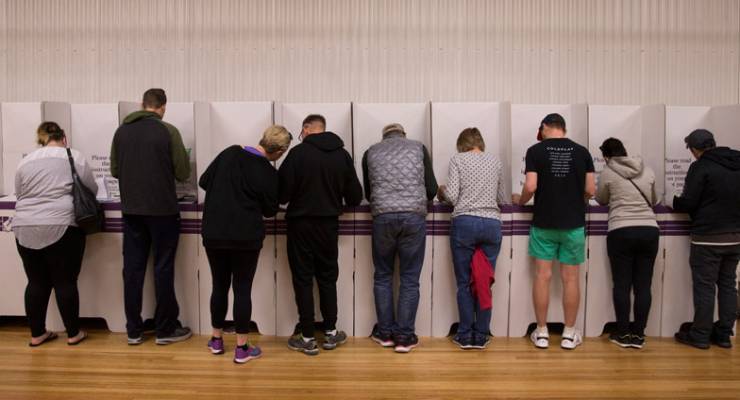
Was the pollsters’ failure to predict the 2019 federal election upset a freak occurrence? Crikey readers didn’t seem to think so — it just spoke to a more persistent problem with modern polling. Elsewhere, readers waded into the failure of infrastructure in the face of population growth.
On the great polling failure
Joe Boswell writes: While it’s certain the results were off in 2019, the close correlation of polls and result in 2016 does not prove the method was good then. Perhaps the polling methods were just as error-prone then as now, but by chance the errors happened to cancel out that year. And in 2019 there may have been much larger errors hidden behind the final net error shown up by the result. Also, on what basis do pollsters apply the magic of weightings to fix the raw data from their polls? That’s the same technique that I learned while studying for my degree in engineering: the number which, when multiplied by your experiment’s result, gives the answer you wanted is known as a “constant”. Silly me, I took that as a joke. But here are the high priests of polling using the same trick. If anything, Keane is understating the problems of verifying the polling methods, and without that polling is no more than a modern form of divination. But it’s useful for those who exploit its output and from that perspective its objective accuracy is irrelevant.
John Hall writes: After the last census debacle I am now very reticent at being fully forthcoming on the “compulsory” polls — particularly on giving out personally identifiable information. Anyone using MyGov would know that the amount of information the government is centralising is creating an Australia Card by default. I am pretty sure that many government bodies have an increasingly better handle on electorate profiles than most of us would be comfortable with and would be the envy of the private pollsters.
On infrastructure
Laurie Patton writes: It’s not about how many of us there are, it’s about how we’re all being crammed into a handful of already overcrowded capital cities. Australia has roughly the same land mass as the United States. Despite accommodating 300-plus million people only a handful of American cities are anywhere near the size of Sydney or Melbourne. Likewise, London is the only one of 200-plus cities in the United Kingdom anywhere near that large. This provides a clue as to how to accommodate more people in a sparsely populated country like Australia.
Send your comments, corrections, clarifications and cock-ups to boss@crikey.com.au. We reserve the right to edit comments for length and clarity. Please include your full name if you would like to be considered for publication.







The proportion of land mass relative to population argument surely needs to take into account that a huge proportion of the Australian landmass is uninhabitable desert. Perhaps such arguments should make a point of referring to proportion of habitable land rather than land mass as such. (I’m thinking of a similar argument for increasing population size, given the length of the Australian coastline.) It’s a tendentious and misleading analogy unless it compares like with like.
Agree lethell…I have been telling anyone who will listen, for years, that this country is about 75% desert. No water, no arable land, unfit for human habitation, hot/humid, and becoming more so.
Why then does this stupid government insist on trying to fill up our ‘vast’ spaces with all kinds of people…especially those on a never ending selection of visas, who never seem to leave? The whole system is a farce, when already there are regional and remote areas with little or no water, no jobs and where residents have a constant struggle to just survive.
It can only get worse under the current regime, who are doing nothing about global warming/climate change. And yet we have another three years of this folly……..
Good points.
I was worried about the result of the last federal election (unfortunately, justifiably) weeks before the election. It’s going to be another 3 wasted years with our do-nothing Coal-ition government regarding global warming.
As I noted, with the last WA state election, in betting the Labor candidate in my very safe Liberal electorate with a very good sitting member (whom even I liked) was 7 to 1 against winning (presumably based on polling rather than reading tea leaves or chicken entrails).
So much so, I was tempted (but didn’t alas) to put a bet on the Labor candidate. She won.
Kudos from an unabashed Luddite to Crikey for the new comment format, especially the like option and the follow-up comments link going to the new comment rather than the head of the article.
And it only took 18 months of pleas & complaints!
I agree but I find the giant pictures of heads etc. at the top annoying.
Looks like I lauded the changes too soon – agree with Matt about those scary giant, featureless heads, are we being watched by aliens?
My first email advising of a new comment din’t go nowheres –
“New reply on the discussion section you’ve been interested in” and it didn’t even tell me WHICH subject I’d “been interested in” (would “in which you were interested” have been beyond the tek-hamsters?).
All it offered was an unsubscribe option which is really taking a risk.
That supa-dupa new format didn’t last long, did it?